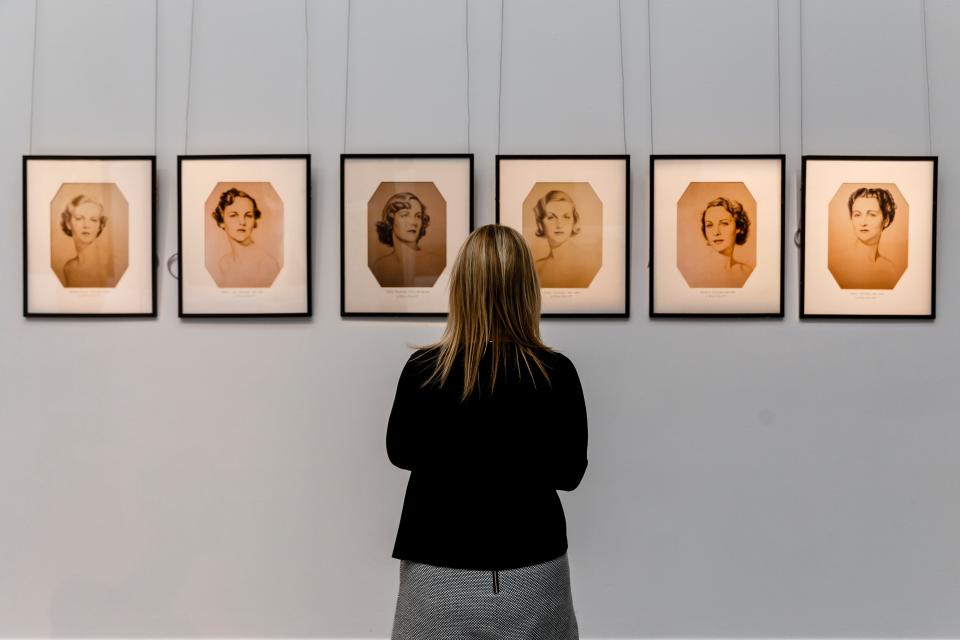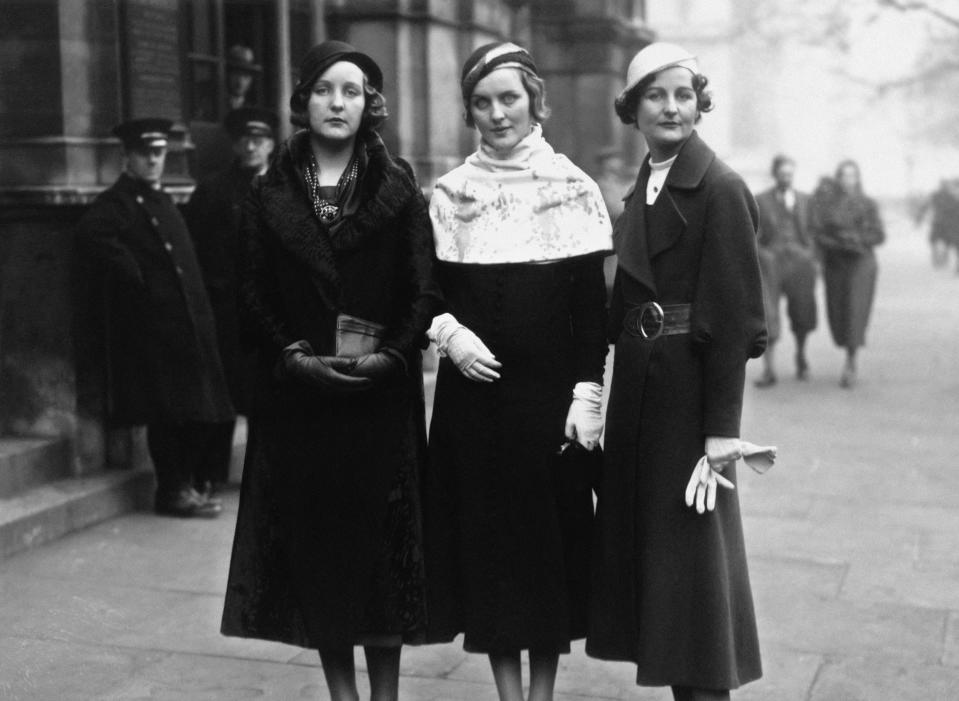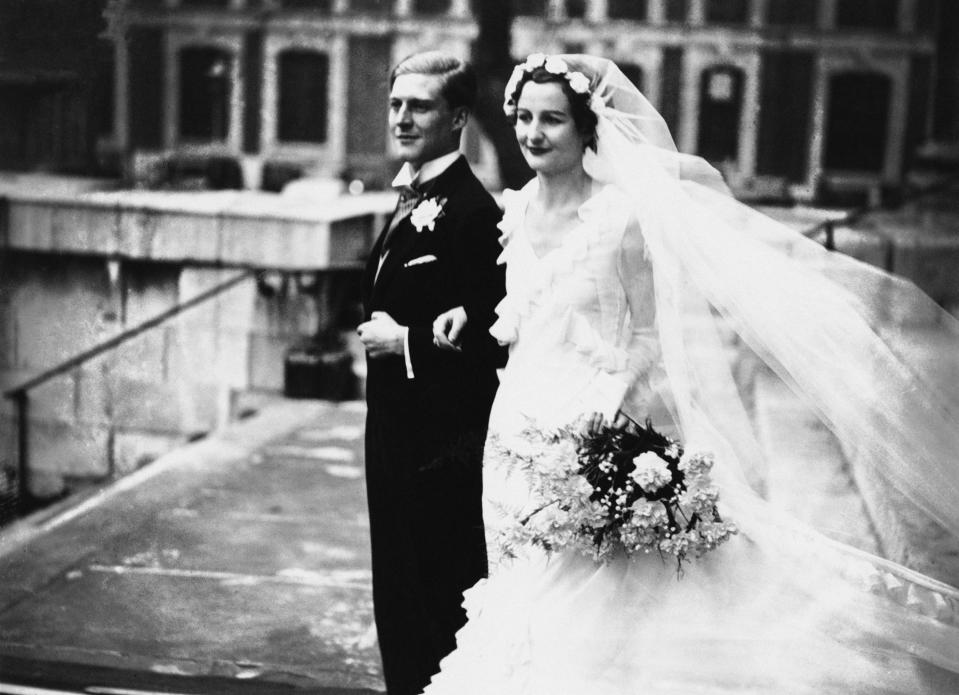In pursuit of Nancy: the life, novels and romances of the wittiest Mitford sister

When times get hard, a good question to ask yourself is: what would Nancy Mitford do? The answer, if you know the novels and letters of this notorious and cherished wit, is usually to keep your sense of humour no matter how bad things get.
Many will know of Nancy already as the first-born of the iconic Mitford sisters – a descriptor that’s overused these days, but remains a fitting moniker for a family that still fascinates us, thanks to their upper-class wit, timeless style and, erm... extremist politics (not all of them, but a couple of them did quite a lot of hanging out with Hitler in the thirties).
But her work is about to become a lot more familiar to those that don’t know it. A luscious adaptation of The Pursuit of Love, her most famous novel, will air soon on the BBC with an all-star casting including Lily James and Andrew Scott. Expect big houses, gorgeous clothes, cut-glass accents and everyone falling dreadfully, dreadfully in love. It’s well known that the novel, which is set between the world wars, was largely autobiographical – so what’s the true story behind her life?
Who was Nancy Mitford?
Born in 1904, Nancy Mitford was the first of the six Mitford sisters, the most culturally significant sextuple since Henry VIII’s wives. Their father, Lord Redesdale, was from landed gentry and became a peer two years before Nancy was born, while their mother, Sydney, had colourful society links – her father, Conservative MP Thomas Gibson Bowles, founded both Vanity Fair and The Lady magazine.
The siblings followed divergent and eclectic paths: Nancy, of course, became a novelist, encouraged by her friend Evelyn Waugh; homebody Pamela reared poultry; Diana married Oswald Mosley and spent a spell in prison because of her fascist beliefs; Unity became obsessed with Hitler and shot herself when England declared war with Germany; Jessica became an ardent socialist and eloped to Spain with her cousin; Deborah, the youngest became the Duchess of Devonshire and transformed the Chatsworth estate. They also had a brother, Tom, who was killed in the Second World War. With Deborah’s death in 2014 at the age of 94, one of the world’s most famous sisterhoods ended.

The family were keen correspondents, and their published letters are a dizzying race through their many fallings out, personal struggles and excellent aptitude for gossip. After Jessica told Nancy she was pregnant, following her scandalous elopement with her cousin Esmond, Nancy wrote, teasingly: “I don’t think you are fit to bring one up after you terribly awful behaviour but what luck that you will always have dear old aunt Nancy at hand to advise & help.” After she had a hysterectomy following an ectopic pregnancy, Nancy wrote to Diana about their mother’s reaction: “Ovaries - I thought one had 700 like caviar.” After Deborah’s society marriage, she wrote to Nancy about what lay ahead - “think of the horror of my future, I’ve got four fêtes to open” - and in the 70s, Nancy asked Jessica to remind her what they had said to the press. “Somebody rang up & said they liked what you & I had written in the Observer. What did we write? Do tell.” And, of course, the letters were never above a spot of humble-bragging. In 1972, Nancy wrote to Pamela, “Only a word to say I’ve got the Legion of Honour [the highest order of merit in France] - you may imagine I’m terribly pleased.”
But if anyone was the gatekeeper of Mitford mystique, it was Nancy. In her novels, she offered a depiction of a childhood growing up in the countryside where boredom was stemmed by secret societies between sisters, which caught the public’s imagination. Some argue that this was what popularised the family – but also, in many respects, what made them more palatable.

The novels
Nancy’s interest in romance, alongside too many pink covers, have allowed a misconception to grow that her novels are merely frothy and whimsical affairs. In fact, their easy wit conceals a darkness at their heart.
The Pursuit of Love, her most famous novel, tells the story of Linda Radlett (played in the BBC series by James) and her cousin Fanny (Emily Beecham), both on the lookout for the right man to marry. On Linda’s path to happiness, she faces a traumatic childbirth, divorce and a family rift, before eventually meeting and becoming the mistress of Fabrice de Sauveterre, a French duke who is also a charming womaniser. None of it is very Richard Curtis – not least (spoiler alert!) the ending, where Linda and Fabrice both die. The book features some now-beloved depictions of her childhood, including the infamous Uncle Matthew, based on her own father, who is depicted as a tyrannical patriarch whose favourite game is the Child Hunt – chasing his children around the estate with bloodhounds. It also contains some of her most bitingly witty lines – including Linda’s declaration that “it’s kinder not to look” on sight of her own new-born baby (Nancy’s studied coldness towards children should not be taken too seriously – she suffered multiple miscarriages and eventually had to have a hysterectomy in 1941, meaning she was never able to have a baby of her own).

Written in a matter of months before the end of Second World War, The Pursuit of Love made Nancy famous. She would return to the Radlett Family in two more novels, Love in a Cold Climate and Don’t Tell Alfred. The former, published in 1949, is Nancy at her most typically subversive, featuring gay characters and a protagonist who marries her uncle.
In her lifetime she wrote eight novels – including, notably, Wigs on the Green, which poked fun at fascists and led to another family falling out – and she was a prolific essay and letter writer, penned four biographies and translated Madame de La Fayette’s anonymously published French novel La Princesse de Clèves.
The romances
Nancy’s own romantic life did not get off to an auspicious start. She was sporadically engaged to aristocrat Hamish St Clair Erskine for a few years from 1928. Sporadic engagements are never promising – nor did it help that Erskine was gay. Eventually he told her he was going to marry another woman. “Don’t think of me as a selfish and hysterical woman even if I appeared so tonight,” she wrote to him after receiving the news.

In 1933 she married Peter Rodd – referred to by the sisters as ‘Prod’, and very much not the knight in shining armour that Nancy was looking for. According to legend, he had already proposed to two women on the week that he asked Nancy to marry him. It was not a successful union; Rodd was feckless, bad with money, had affairs and earned the nickname ‘The Toll-gater’ from the family, thanks to his talent for rambling about dull topics.
The undoubted love of Nancy’s life was Gaston Palewski, commander of the Free French and a close confidante of Charles de Gaulle, whom she met in 1942. She later moved to Paris to be close to him, and went on to base the character of Fabrice in The Pursuit of Love on him. He remained non-committal and eventually married someone else, and a perception persists of smitten Nancy decked out hopefully in Dior, waiting by the phone. But the pair stayed in touch until Nancy’s death in 1973; she wrote her final letter to him, and he was the last person to see her before she died.
Nancy in London
The Mitford family had a London home, Rutland Gate, in Knightsbridge, where Nancy spent much of the war. Although her other sisters were more openly political, she had her own causes, albeit quietly, and offered her London home as a refuge to Jewish families evacuated from mainland Europe. During the war she also worked at Heywood Hill Bookshop, helping carve out its reputation as an important literary meeting place. The shop is now the site of a blue plaque commemorating Nancy, who died in 1973 from Hodgkin’s lymphoma, after a long period of excruciatingly painful illness. She bore it all with her characteristic, self-effacing wit; in one of her final letters, to her friend James Lees-Milne, she wrote: “It’s very curious, dying, & would have many a drôle amusing & charming side were it not for the pain”. Funny and poignant to the end.
The Pursuit of Love is on BBC One on May 9
Read More
Why are we still so obsessed with the Mitford sisters?

 Yahoo Movies
Yahoo Movies 